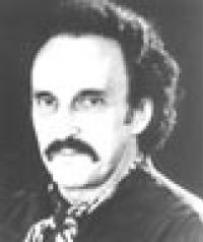A few months ago, Inside Planning presented the question, “Should LA Raze or Restore St. Vibiana?” Leon Whiteson, Architectural Critic and, most recently, Author of A Garden Story, published by Faber & Faber, provides the restoration argument.

Leon Whiteson
Sometimes it seems that the unofficial motto of Los Angeles is Henry Ford's declaration that "History is more or less bunk." As a city whose main impulse is a constant reinvention of the future, Los Angeles often finds it difficult to take its own history seriously.
This lack of regard for the past is particularly painful when it comes to our architectural heritage. Up until quite recently, many fine buildings, from private houses to historic theaters were demolished without much public outcry.
It's only in the past decade or so that the preservation of some of our relatively few important public buildings has become a serious endeavor. The major watershed in this change of attitude was the renovation and restoration of the Pelissier Building on Wilshire, containing the Wiltern Theater, completed in 1985. Recently, the May Co. building on Wilshire was saved from demolition and will find new life as the home of Otis Art Institute.
But before those of us who cherish our architectural landmarks could become complacent, along comes Cardinal Mahony with a bombshell: the proposed demolition of the 120-year-old St. Vibiana's Cathedral on downtown's Main St. and its replacement by a new $45 million Cathedral Center.
Dedicated in 1876, St. Vibiana is one of downtown's oldest surviving major public buildings. Its Baroque Italianate style was copied from a church in Barcelona, Spain, hometown of Thaddeus Amat, then Bishop of the young parish of Los Angeles. It has along the way survived earthquakes that cracked its bell tower and riots rampaging in the neighboring streels. Today, it sits on the edge of Skid Row, its stout stucco walls besieged by the homeless and by legions of drug dealers.
Few architectural historians will claim that St Vibiana's is a masterpiece. The proportions of its original redbrick facade, covered with a limestone facing in 1922, are top heavy. The bell tower is clumsy and the cathedral's barrel-vaulted coffered ceiling sits awkwardly on thin Corinthian columns. The marble and onyx altar, added in 1893, verges on the vulgar.
However, buildings that mailer in the social life of the city acquire a patina that enhances their architecture. No one in his right mind would think of tearing down City Hall, for instance, even though its crude shaft is ugly and its interior functions poorly. Such structures have a powerful symbolic value for our all-too-fragile civic realm.
This is especially true of St. Vibiana's, now the spiritual center of the largest Roman Catholic diocese in the U.S. Though St. Vibiana's has seismic problems, costly maintenance and poor parking, its historic fabric has a symbolic resonance that transcends its functional disadvantages. At the same time the old church is a vital focus for any meaningful revitalization of our ailing downtown.
Given these factors, it is surely possible to expand St. Vibiana's without bringing in the bulldozers. The Los Angeles Conservancy is actively engaged in trying to convince Mahony that the social continuity of his diocese can be minored in the continuity of its architecture.
Let's hope the Cardinal listens and resists the impulse to write off an important fragment of Los Angeles' history as more or less bunk.
- Log in to post comments



